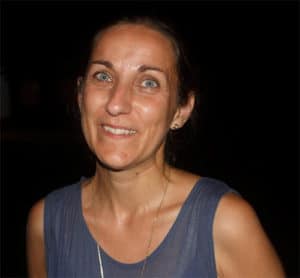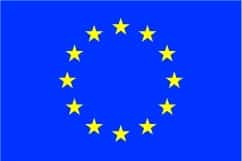
Simonet sur les traces de ses ancêtres
Mobilité Bénin 20-26 avril 2019
© Cécile Benoist, April 2019 – Project K2 IDEM – Erasmus + / Samba Résille
Brève histoire des Alukus de Guyane
Les ancêtres des Alukus de Guyane étaient des esclaves d’Afrique de l’Ouest qui ont marronné, ils se sont enfuis des plantations où ils étaient captifs. Poursuivis, ils ont dû se défendre pour conserver leur liberté durement reprise. Le marronnage, c’était pour résister à l’esclavage, mais aussi pour « se reconstituer, se reconstruire », dira Simonet.
Hidden in the forest, these newly free persons built themselves a new identity, from various African ethnic groups, and integrating their ordeal of slavery. Their language is partially reconstructed and renewed. The slaves didn’t have the right to speak their language, some elements were lost, and others were brought by members of various ethnic groups. As for religion, way of life, music, songs… All these parts of culture were transformed because of the conditions of life of the slaves (separation of families, prohibition of some practices…) and of the fusion of the cultures of the members of the different ethnic groups gathered in the escape.
On the run, the Alukus took refuge in the jungle where they met the Wayanas, Native Americans from the Amazon rainforest. The Wayanas helped them to adapt to life in this environment. Then, the Alukus set up on the edge of the Maroni River.
In Guiana, “Bushinengue” is a generic term to name various ethnic groups whose ancestors were the “negmarrons”: Alukus (or Boni), Saramaca, Paramaka, Djuka (or Aukan). The Bushinengue represent 70 000 people in Guiana and 120 000 in Surinam. They don’t recognize the border between the 2 countries.
Premières connexions
Dès son premier réveil au Bénin, Simonet Doudou, membre de l’équipe de Guyane et chef coutumier aluku du village de Boniville sur le Haut Maroni, installe un lieu de culte provisoire au pied d’un arbre, tout près du bâtiment où nous dormons. Il y fait une brève cérémonie, pour demander aux ancêtres d’ici et du Haut Maroni que ce projet soit une réussite.
Après le petit déjeuner, nous nous rendons pour notre séance de travail dans le centre culturel, artistique et touristique qui s’appelle « Ouadada », qui signifie ici « Bienvenue ». Or, dans le Maroni, on dit « Ouada » pour souhaiter la bienvenue aux visiteurs, et le nom d’artiste de Cécilon Dada, autre participant à la mobilité, musicien reggae, est « Ouadada » ! Des similitudes qui en augurent bien d’autres…
During the afternoon, Gérard, manager of Ouadada, takes us to a tour of the voodoo squares of Porto-Novo, rehabilitated through his center and highlighted by Beninese artists. A voodoo priest conducts a little ceremony and invites Simonet to make a wish. He will tell us later that he wished to meet the Alukus from here. He notices also the proximity between the funeral rituals between here and there: “We don’t have so many things but the result is the same”. And he notices the similarity between the King that we visited at the end of the day and the “Grand Mon”.
À la recherche des Alukus du Bénin
The following day, as we were walking in the capital to discover the afro-brazilian architectural heritage, Simonet talked with a Beninese woman on the market. She confirms that there are indeed “Alukus” in the city.
On the day after, the teams go to Ouidah, the city from where the slaves were leaving. For many participants, this day was really emotional. Tread on these places makes vibrate the human beings that we are, question our origin, our history, our identity, participate in our personal trip. Many participants, like the Alukus in Guiana or the Brazilian people, have ancestors that suffered these ordeals and lived the terrible crossing. Here, the history of human kind marked by the slavery resonates with the history of the individuals.
On our way back, Simonet says to us that he really wants to meet the Alukus from Benin before he gets back. He wants to “take some news from the family”. And at night, the Guianese team plays its traditional drums to thank the divinity for their welcome.
La rencontre
Thanks to Gérard, the manager of the Ouadada center, a meeting is organized between Simonet and one Aluku from Benin. Two people from Samba Résille, Simonet, Gérard and our “intermediary” go to a bar in the city. We learn that the person we are waiting for is called “Minakode Aluku”, and is a deputy really appreciated by the population.
Simonet tells us a little bit more about his ancestors. In Guiana, the Alukus kept the memory of the names. They got deported in Surinam, ran away, were being hunted down. They fought back with some weapons, knives, sabers and… mysticism. When they were hiding in the forest, they met the Boni, they are now one family. These slaves, coming from the north of Benin, were warriors. Then the Alukus met the Wayanas while they moved back up the river to go to a safer zone. There were a few conflicts between them, but finally they got along and support each other.
The deputy Aluku arrives. Simonet tells him the story of the Alukus in Guiana, says the names of the villages where they live, that they created. An honorable hug follows and Simonet gets out his traditional outfit as Gérard explains the IDEM project. The deputy does not speak French, Gérard translates for him. The deputy clarifies that he is really happy to see us. The context of the elections in the next days does not allow him to do as much as he would like to, he assures that he will go to Guiana to meet his family. He is really touched by Simonet’s approach and would have loved to present him the different branches of the Alukus. Simonet is really moved. The deputy tells him that the voodoo will go to him.
The deputy does not speak French, Gérard translates for him. The deputy clarifies that he is really happy to see us. The context of the elections in the next days does not allow him to do as much as he would like to, he assures that he will go to Guiana to meet his family. He is really touched by Simonet’s approach and would have loved to present him the different branches of the Alukus. Simonet is really moved. The deputy tells him that the voodoo will go to him.
Pour le député, c’est grâce au vodun que les Alukus sont tolérants, et s’ils en prennent soin, ils seront riches. Simonet parle du bois et de l’or sur le territoire guyanais aluku, dont ils ne profitent pas. Mais maintenant que Simonet est venu, il va être riche car « le vodun apporte la richesse », affirme le député.
We take the car and we are drove to the library “United leaders of Mededjonou”, of which the deputy is a big sponsor. A primary school teacher comes to present it to us.
Then we leave and we head for the villages near the border with Nigeria to get to the deputy’s house. We recognize it immediately: a big building with 3 floors next to small houses. On the terrace, portraits of parents, uncles and aunts of the deputy, attract attention. He presents them to us and Simonet takes pictures of them. After entering the living room, the deputy comes and goes, and we understand that he changes his planning (the elections happen in 2 days) to welcome Simonet. Then, he invites us in a small room outside, where he shows us different potteries representing his ancestors.
While we are about to get back to the Oudada center, where the other participants are preparing our international diner, they announce to us a new meeting…
A royal moment
After the deputy, we are drove to the king of the Alukus, more precisely like written on the entrance of the palace: “His majesty Kpotéhoun Allanmakoun 18th king of Adjarra, enthroned the 19th of october 2018”. Another inscription lists all the kings of Adjarra that preceded him, until the founder Attawa, who reigned from 1722 to 1749.
Un moment royal
Après le député, c’est chez le roi des Alukus que nous sommes conduits. Plus précisément, comme l’annonce l’inscription à l’entrée du palais : « Sa majesté Kpotéhoun Allanmakoun 18eme Roi d’Adjarra, intronisé le 19 octobre 2018 ». Une autre inscription liste tous les rois d’Adjarra qui l’ont précédé, jusqu’au fondateur Attawa, qui a régné de 1722 à 1749.
After his enthronement, the king spent a few months in a voodoo convent, and he is here since 3 weeks ago. The salutation to the king is with bended knees, with the head tilted to the ground. Simonet says to him that he is happy to meet him because he didn’t expect it, and tells him his search: the Aluku deputy they told him about, the confirmation by the lady in the market… So he said to himself that thanks to the grace of gods, he would try to meet him. In Ouidah, he asked the guide who said that he would try to help him, his trust got stronger, and he talked about it to Gérard from Ouadada and to Hamza from Samba Résille. The meeting was not planned; Simonet would have wanted to give him a present.
The king asks him to bend his knees and he blesses him (Gérard is translating). “May the gods protect your life, may the gods make your home happy with joy and wealth”. Then the king blesses the deputy who allowed this meeting with Simonet: “May God gather you, you won’t forget each other and you will get along forever”. The king blesses the group, wishes us a comeback in peace and that “our stars shine eternally”.
Le partage
We get back to the Ouadada center, with the deputy who accepted our invitation, to share with the other Aluku members of the project, but also to share this meeting with the participants. Because this mobility in Benin has been conceived like a return to the culture source and this reunion of descendants of common ancestors in the African continent is a beautiful symbol of it.
And after a few moments of formal exchange, this improvised meeting is happening in the more spontaneous and natural way: dancing and following the rhythm of the drums!
Découvrir le projet Identités en mouvements >>>


